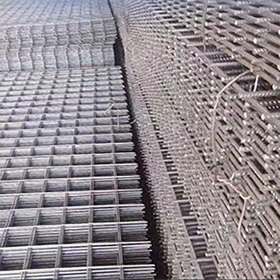Dec . 21, 2024 13:26 Back to list
Using Barbed Wire for Enhanced Fence Security and Protection
Barbed Wire on Fences An Intriguing Symbol of Boundaries
Barbed wire, an invention born out of necessity, has become an iconic symbol of boundaries and barriers across the globe. Its implementation on fences has transformed landscapes, shaping not only our physical geography but also the sociopolitical narratives that thrive around it. The combination of practicality, history, and symbolism creates a multifaceted appreciation for barbed wire and its role in human society.
The Invention of Barbed Wire
Barbed wire was first conceptualized in the late 19th century, with Joseph Glidden, a farmer from Illinois, credited for its widespread adoption in 1874. At that time, the American West was characterized by open range grazing, where cattle roamed freely. As settlers began to establish farms and ranches, there arose a pressing need to delineate property lines and protect crops from wandering livestock. Traditional fencing methods were often exorbitantly expensive and labor-intensive.
Glidden's design—a simple strand of wire with sharp protrusions—provided an effective solution. Its low cost and ease of installation made barbed wire immensely popular among farmers and ranchers. In a very short time, it became a ubiquitous feature of the American landscape, marking the transition from open range to enclosed, privatized land. The growth of barbed wire fencing not only aimed to protect crops but also reflected an evolving understanding of land ownership and boundaries.
Barbed Wire in Historical Context
Barbed wire changed the dynamics of land usage and agricultural practices, but it also played a multifaceted role in historical conflicts. During the early 20th century, barbed wire became synonymous with militarization, effectively used to protect military installations and during wartime. Its presence during World War I, for example, served as both a deterrent and a barrier—symbolizing the harsh realities of conflict and the lengths nations would go to establish territorial integrity.
In more recent history, barbed wire has become a powerful symbol of division. It found its place in various geopolitical contexts, such as the division of Berlin during the Cold War and the fortified borders of countries experiencing migration crises. The images of refugees navigating through barbed wire fences are haunting reminders of the human cost of barriers built in the name of security.
barb wire on fence

The Symbolism of Barbed Wire
Beyond its physical applications, barbed wire has evolved into a potent symbol of oppression, restriction, and desolation. Art and literature have often drawn upon its imagery to evoke feelings of confinement and struggle. In countries grappling with issues of immigration and border control, barbed wire highlights the stark realities of exclusion and control, prompting discussion around humanity, safety, and dignity.
Conversely, some artistic expressions utilize barbed wire as a symbol of resilience and the fight for rights. For instance, in various art installations and protests, barbed wire can represent the struggle against unjust systems and the desire for freedom. This duality portrays barbed wire not just as a mere object, but as a lens through which we can analyze broader societal issues.
The Future of Barbed Wire
As we look to the future, the conversation surrounding barbed wire is evolving once again. With advances in technology and changing perspectives on security and borders, some regions are re-evaluating the need for physical barriers. The rise of digital surveillance and smart border solutions presents new ways to manage security without relying solely on traditional fencing.
However, the symbolic weight of barbed wire endures, serving as a constant reminder of human attempts to impose order and control over nature and society. Whether viewed as a tool for protection or a manifestation of division, barbed wire continues to spark debates about the values we prioritize and the rights we uphold.
In conclusion, barbed wire on fences embodies a complex narrative steeped in history, practicality, and varying symbolism. From its origins in agricultural innovation to its emergence in military and geopolitical contexts, barbed wire remains a fixture in our understanding of boundaries—both literal and metaphorical. As we navigate the challenges of modern society, the lessons learned from the use of barbed wire can influence our continued discussions around separation, security, and the intrinsic value of human connection.
-
Reinforcing Mesh: Core Material of the Construction Industry
NewsJul.07,2025
-
Welded Wire Fabric Reinvented for Modern Projects
NewsJul.04,2025
-
Superiority of Stainless Steel Woven Mesh
NewsJul.04,2025
-
Key Types of Razor Wire and Their Applications
NewsJul.04,2025
-
Durable Metal Fence Types for Security
NewsJul.04,2025
-
Best Materials for Livestock Fence
NewsJul.04,2025
products.







